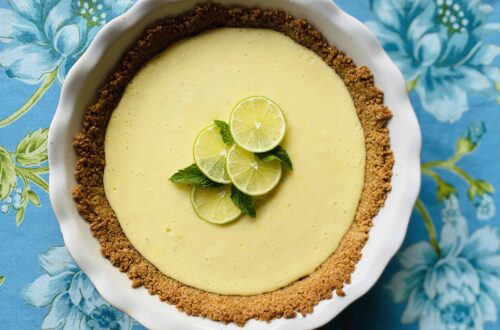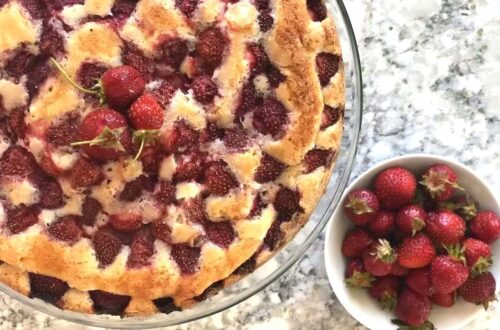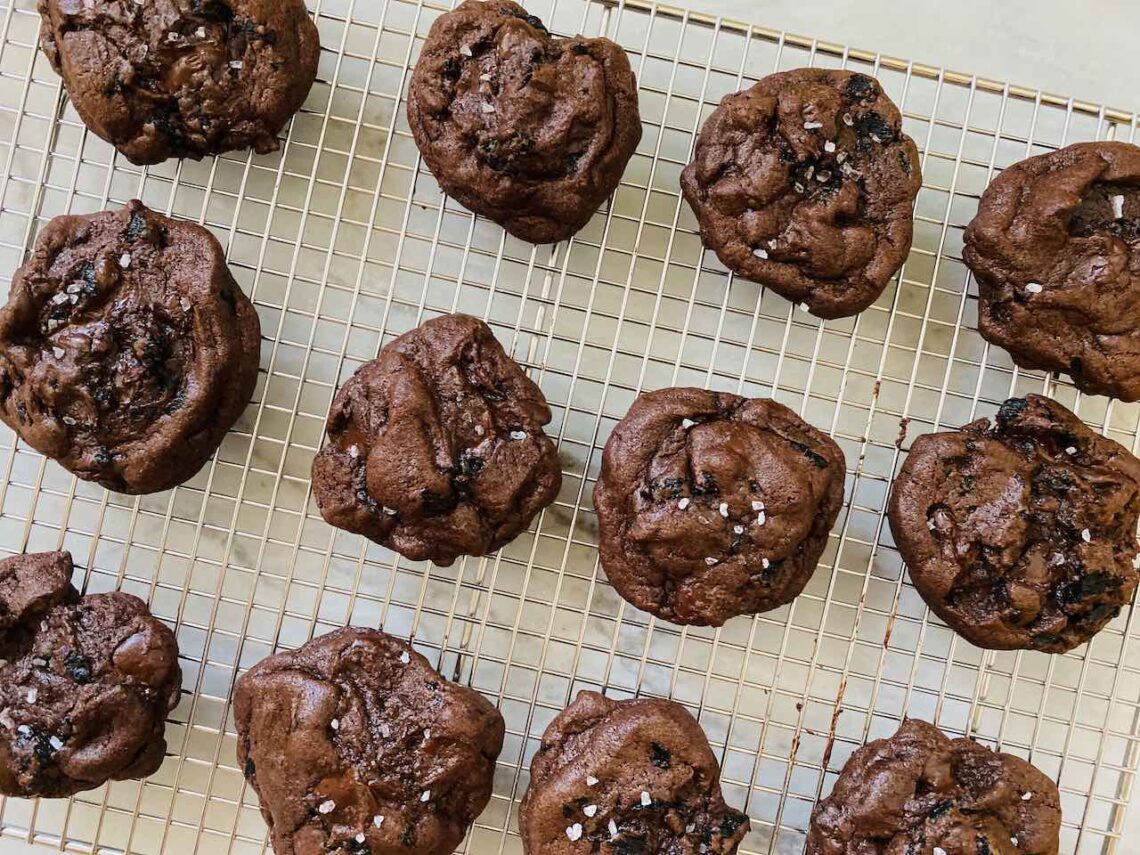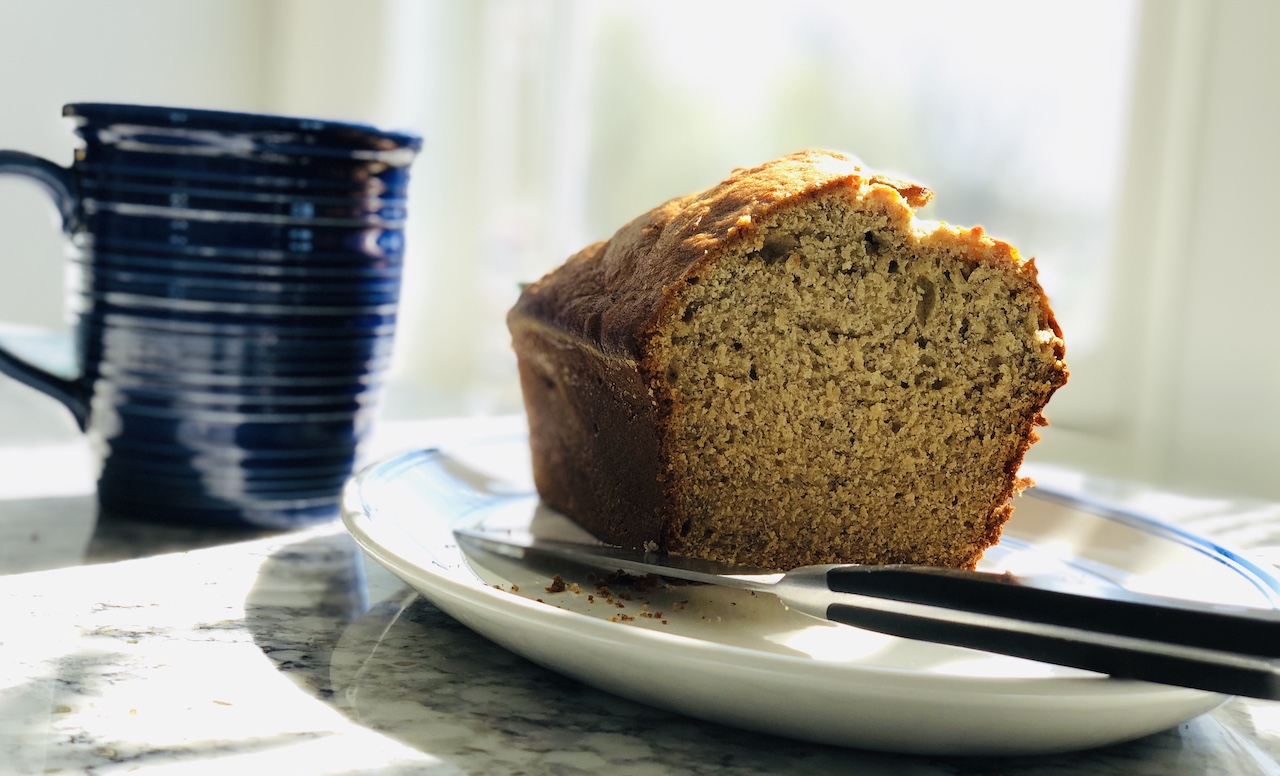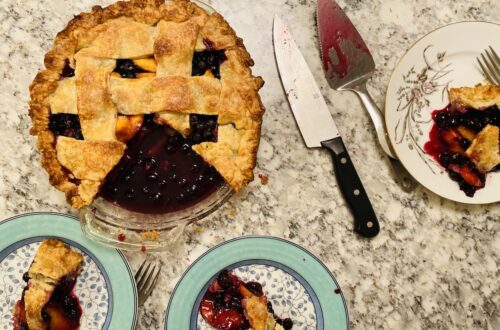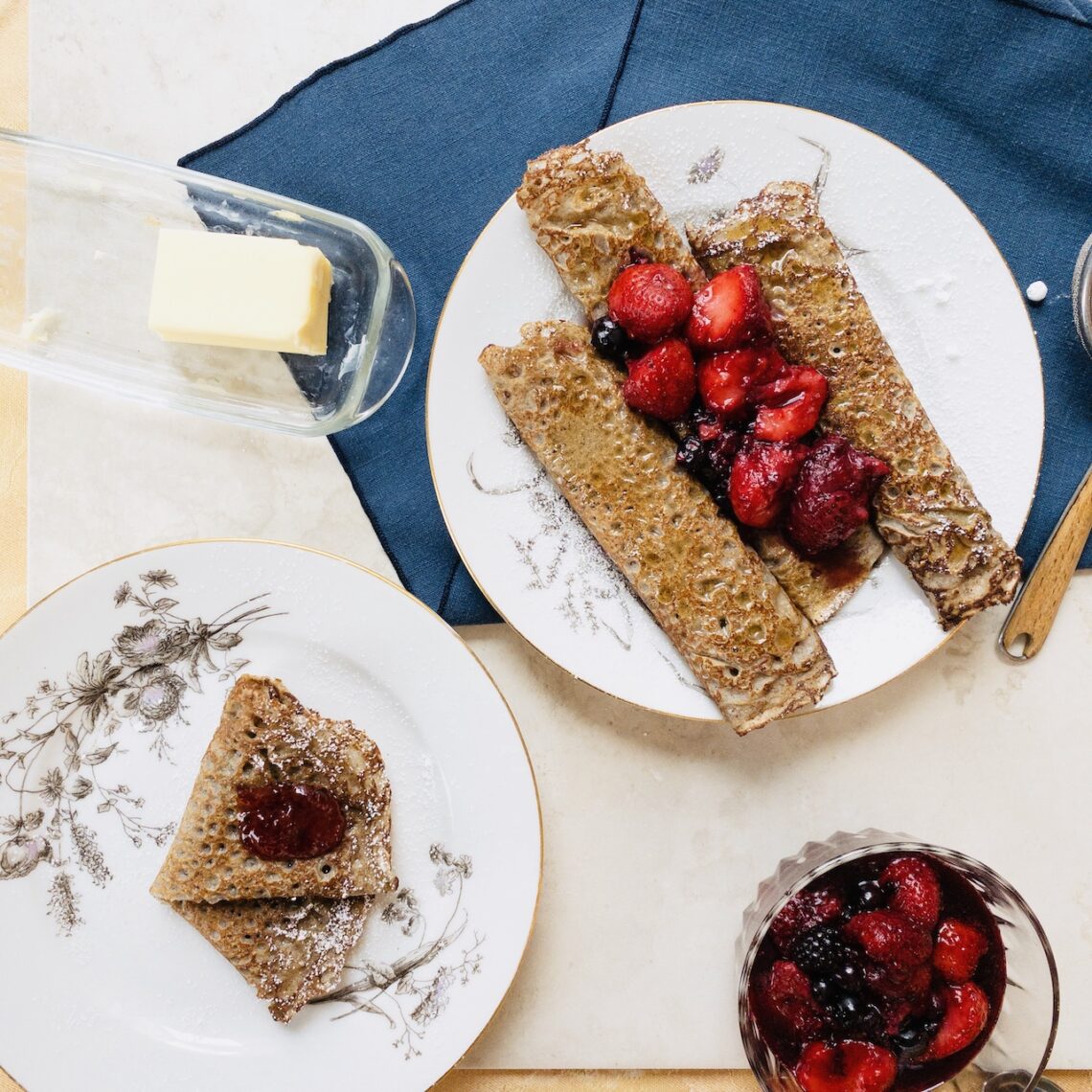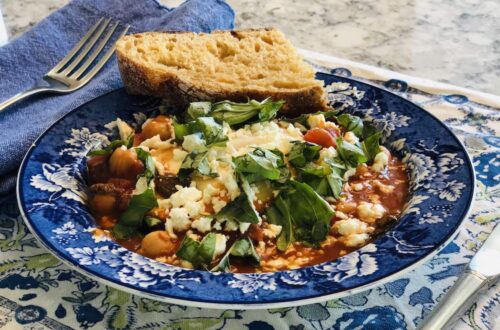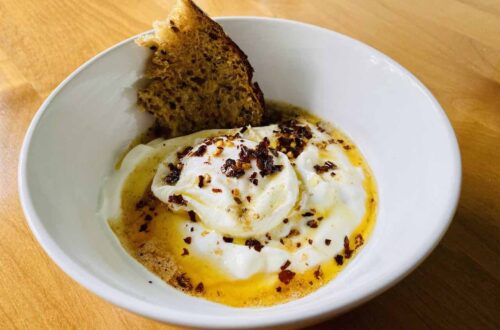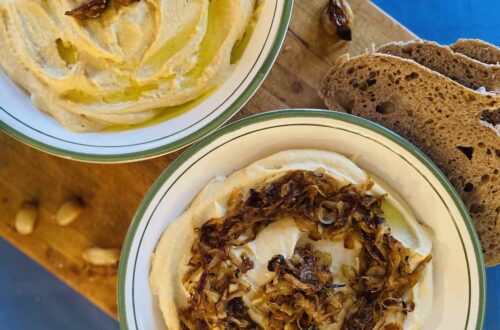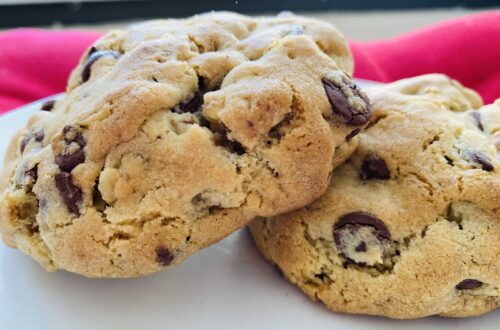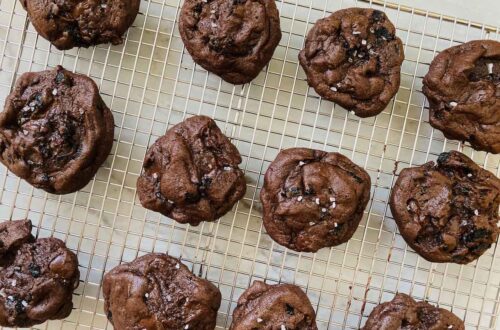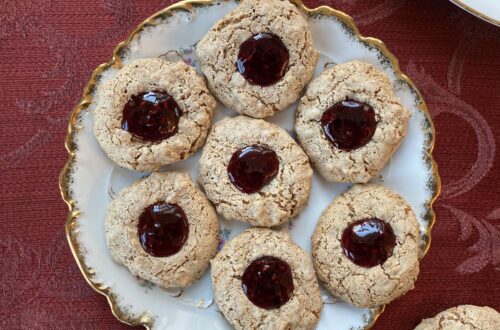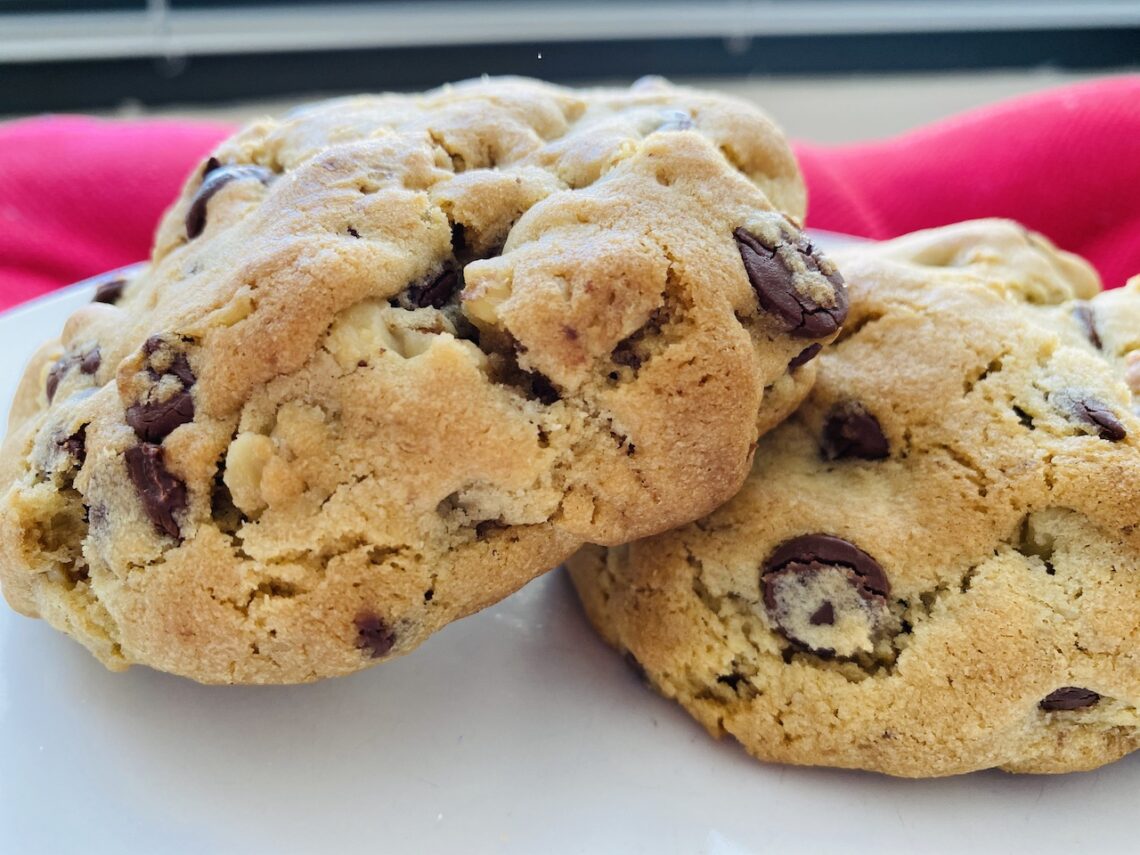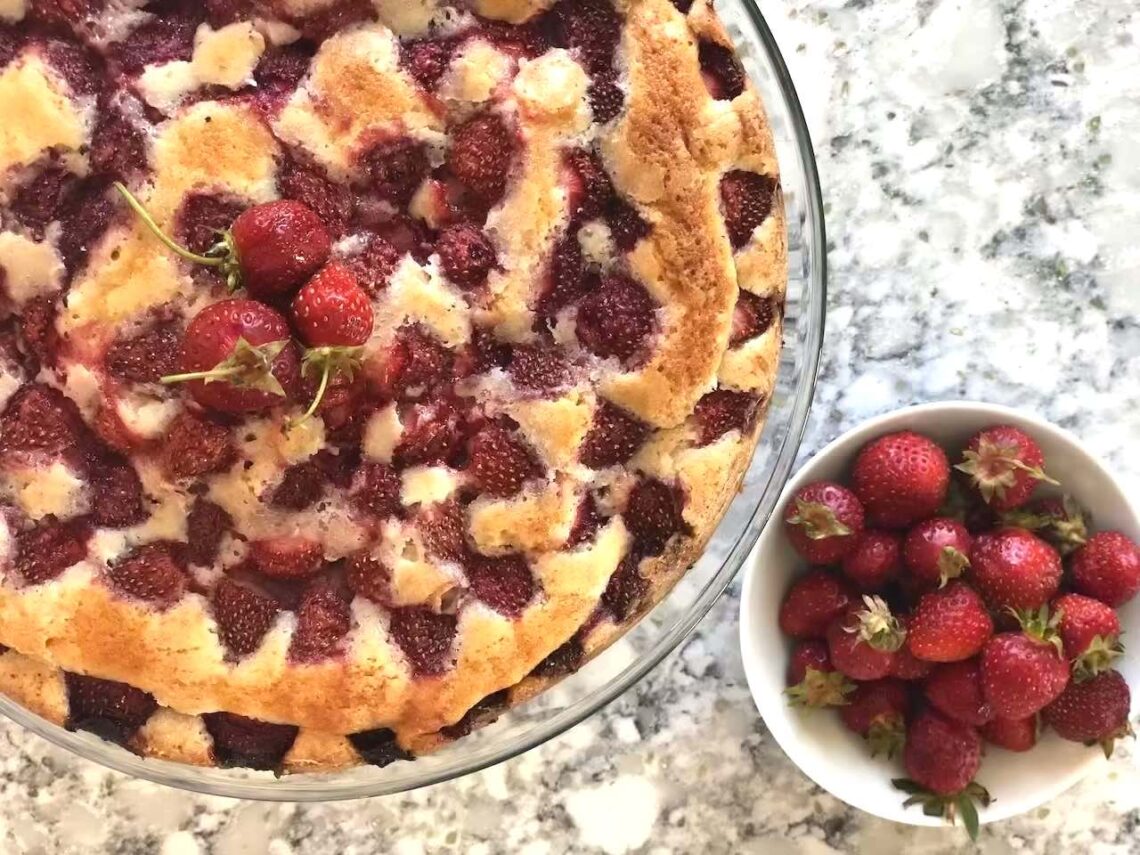Dessert
-
Flourless Chocolate Cake
This cake is perfection. It’s dense, but not too intense, enticing you to eat just another small bite again and again … and again … until you’ve actually eaten quite a large slice (or, perhaps, the whole cake). Everyone loves this cake. It’s the perfection of gluten-free: you don’t notice that there’s no flour in it, just that it’s like eating rich chocolate clouds.
However, when I went back and looked at the ingredients, I realized how unethical a cake it is. Cocoa. Sugar. Butter. Almonds. Eggs. Other than water and salt, almost all the ingredients in this cake have a variety of problems in their supply chains. (The cocoa supply chain relies on forced labor, child labor, and causes deforestation, among other issues; sugar production relies on forced labor and often harms the environment; butter produces greenhouse gases and often has labor abuses – you get the idea.)
-
Chocolate Chocolate-Chip Cherry Cookies
Every once in a while, you stumble upon a special cookie recipe. It’s the kind that, once you’ve tasted it, you suddenly know: these cookies will forever be part of your core toolbox of cookies, just waiting to be baked at a moment’s notice. These cookies – chocolaty, gooey, mixed with a tartness from the cherries – have served me well since I discovered them. They satisfy a deep chocolate craving, whether that’s at a picnic, a dinner with friends or as a delightful snack during the low point of the work-from-home afternoon or after a long summer evening walk.
I have also been searching for the right recipe to once again dive into the cocoa supply chain. Yasmin Khan’s recipe for this recipe is perfect, since she was a human rights campaigner before becoming a cookbook author. While issues around trafficked and forced child labor in the West African cocoa industry generally make the headlines, deforestation is another important, if not as widely known, issue in the cocoa sector.
-
The Limiest Key Lime Pie
I love key lime pie. But it has to be really, really limy key lime pie, the type that makes your mouth pucker with the sourness. This is that recipe: tangy, sour, and just sweet enough to complement the lime. So let me be clear: if you don’t like limes, this recipe is not for you. For those of you who do like the limiest of key lime pies, this is the key lime pie for you. Adapted from Smitten Kitchen’s recipe, this is originally from Joe’s Crab Shack in Miami – where I have never been but very much wish to go. This key lime pie makes you wish that we could all be sitting in the Caribbean watching the sun set over the ocean.
I’ve chosen to focus on limes for this post. (How could I not? They are the star of the show.) There are two main types of limes sold in the US, both of which can be used for this recipe: Persian limes and key limes. Persian limes are larger, while key limes tend to be smaller, slightly less tart, and contain more seeds. Although the pie is named after the key lime, I tend to use Persian limes for this recipe for one reason and one reason only: Persian limes are easier and faster to juice. But there’s no right or wrong way here, so I’ll leave it up to you to decide which to use.
-
Buckwheat Crepes
A few years ago, my parents started a tradition of cooking a big breakfast every Sunday. Whenever I was home, I thrilled at the idea of pancakes and a peaceful moment during the morning, as the sun shines into the kitchen, shimmering on the countertop. After being home for many of these Sundays during the pandemic, I began to experiment. Eggs and pancakes are great, but variety is essential. The challah I like to make never lasted until Sunday for French toast, and I still haven’t found a frittata I love. That’s where these buckwheat crepes came in – they are simple, fast, and pretend to be healthy.
I found this recipe through a circuitous route. Like everyone else, I hopped on the sourdough bandwagon in the early days of the pandemic. In Sarah Owens’ fantastic cookbook, Sourdough, there is a recipe for buckwheat crepes – inspired by one of my favorite food bloggers, David Lebowitz. After hunting down the original recipe on his blog, I knew I had to try it. The crepes are thin but have a deep nutty flavor that tastes great with maple syrup, fruit, or jam.
-
Hazelnut-Raspberry Macaroons
When I lived in Germany, I learned one very important thing: Christmas is a really big deal. Christmas markets spot the city, advent wreaths with candles sit on dining room tables, and the whole country shuts down for two and a half days at Christmas. Plus, there are Christmas cookies. I had always thought that Christmas cookies were those sad little sugar cookies that you decorate with colored frosting that no one enjoys eating. But the variety of cookies for a German Christmas was so much more interesting and exciting.
These hazelnut-raspberry macaroons come from one of my favorite cookbooks, Luisa Weiss’s Classic German Baking, one of the few cookbooks to make German baking accessible to an American audience (and pantry). This cookie is a new favorite – it’s light and fluffy, with a good mix of tart from the jam and sweet from the cookie.
-
Rugelach
In honor of Hanukkah, I made rugelach this week. Having never eaten homemade rugelach, I only had memories of dry, crumbly cookies. But the pandemic has instilled in me a desire to hold on to traditions – even ones I’ve never followed before. These small, crescent-shaped cookies are perfect for cold December evenings. They are flaky, crunchy, and just the right amount of sweet. (I gave some to a 90-year-old friend, Polly, who said they “tasted like Hanukkah.”)
Enough about rugelach – and on to this week’s ingredient: sugar. Sugar comes from both sugarcane and sugar beet. Unfortunately, both supply chains are rife with environmental and labor abuses, including forced and child labor. According to the US Department of Labor, sugarcane and sugar beet are both produced with forced and/or child labor in at least 20 countries across Asia, Africa, and Central and South America.
-
Levain Chocolate-Chip Walnut Cookies
Today’s topic is cocoa. Full disclosure: I spend a lot of my real working life working on issues related to child labor in the cocoa industry, which made it was really hard to keep this post short. (Sorry!) For weeks I’ve been searching for the right recipe for chocolate – something a little different, but not too difficult. Luckily, last week a friend raved to me about Levain cookies. Levain cookies come from New York City’s Levain Bakery, which apparently is very well-known. As a true Midwesterner, I had never heard of the bakery or the cookies, but was fascinated by the idea of a chocolate chip cookie the size of a small cake. I have no idea if these cookies actually taste like the ones at Levain Bakery, but I do know that they are incredible – and really intense. After giving away one, I pretty quickly received a text message: “Oh my God, that cookie is amazing.” They truly are. These cookies should be just cooked, golden brown on top and still gooey in the middle.
But enough about the cookie. Let’s focus on the cocoa industry, which like many commodities, has a largely hidden supply chain and a number of human rights issues. Cocoa beans are found in cocoa pods, which grow on trees. These cocoa trees can only grow in certain latitudes – between 20 degrees north and 20 degrees south of the equator. Much of the world’s cocoa – at least 60 percent – is produced in Cote d’Ivoire and Ghana. This includes most “bulk” cocoa that goes into candy, chocolate chips, Nutella, and most of what you probably buy. Unfortunately, the West African cocoa industry has numerous problems, including low wages for farmers, high incidences of child labor and forced child labor, and it is a leading cause of deforestation in Cote d’Ivoire.
-
Blueberry-Peach Pie
When I was a child, vacation meant pie. Key lime pie, strawberry rhubarb pie, but most importantly, blueberry peach pie. In my memory, this was the perfect pie: not too sweet, just tart enough, with a flaky crust. We would pick it up from a pie stand on the side of the road and I would hold it carefully on my lap on the ride home, feeling the heat from the freshly baked pie through the container. That pie stand disappeared some years ago, but since then I’ve been trying to recreate this perfect pie. I’ve spent years trying out different crusts – all butter, with vodka, butter and shortening – but just one tablespoon of apple cider vinegar here makes all the difference. The filling is sweet but still a little tart, with no cornstarch and no frozen berries: just the best pie dough I can imagine with that perfect mix of blueberries and peaches.
Blueberries are the focus today, since here in the Midwest we are at the height of blueberry season. The US is the world’s largest producer of blueberries, producing an estimated 690 million pounds in 2016. Despite the large domestic production, the US is actually a net importer of blueberries, due to the large imports during the winter months when they don’t grow in the US. In 2017, the US imported 137.8 million pounds of fresh blueberries, over half of which came from Chile.
-
Strawberry Cake
Every summer in Berlin, little huts from Karls Erdbeerhof (Karl’s Strawberry Farm) pop up outside of train stations and sell strawberries by the kilogram. This is my favorite time of year in Germany, where I lived for five years: the days are long, everyone is outside, and the world feels at peace. Plus, there are strawberries – and lots of them. When I first moved to Germany, these luscious and sweet strawberries were a revelation, so different from the perfectly shaped, watery-tasting ones I had grown up eating.
This cake is all about strawberries and, to me, it tastes like summer. It tastes like a picnic at Tempelhof, the former airport turned public park in Berlin, where crowds gather as soon as the weather permits. It tastes like the joy of sitting on the grass for hours, eating and drinking as the sun sets and friends come and go. It tastes like the carefree feeling of summer in Berlin.
As you could probably have guessed, picking strawberries is neither easy nor carefree. It’s difficult work that involves stooping down and squatting for hours at a time. Workers must move quickly and know which berries are ready to be picked, while also being gentle with the berries to avoid bruising them. Pesticides are also a major problem. According to the Environmental Working Group, strawberries are “the fresh produce item most likely to be contaminated with pesticide residues.” This is true even if the strawberries are both rinsed in the field and washed before being eaten. 98 percent of strawberries tested by the federal government had pesticide residue on them. While there is limited data on these pesticides’ effects on workers, there is evidence that pesticides and fumigants can lead to increased risk for cancer, harm child development, and may cause birth defects.
-
Banana Bread
When I first moved to Berlin in 2011, a fellow American who lived down the hall gave me this recipe. Although that was almost a decade ago, it has remained my go-to banana bread. It’s what I made when I felt homesick in those first couple of years in Berlin and what I made to give my German friends a taste of “American” baking in my later years in the city. (My friends can attest to the number of times I showed up at parties – and soccer practice – with this very banana bread). It’s what I tried (and failed) to bake when I had a terrible day in law school during 1L and it’s what I still make when I need a quick and easy dessert for something.
But bananas, oh no. I love bananas and could eat them every day. And I’m not alone; bananas are Americans’ favorite fruit. Unfortunately, bananas have a deep and ugly history. (Apologies to my friend who, while I was considering starting this blog, said to me: “Please just don’t ruin bananas, it’s my pandemic staple.” Really, I’m sorry.) While Chiquita presents itself as a fun fruit company with its own little jingle, the truth is much darker. For decades, companies like Chiquita and Dole harmed communities, especially in Central and South America, in order to profit off of bananas.

